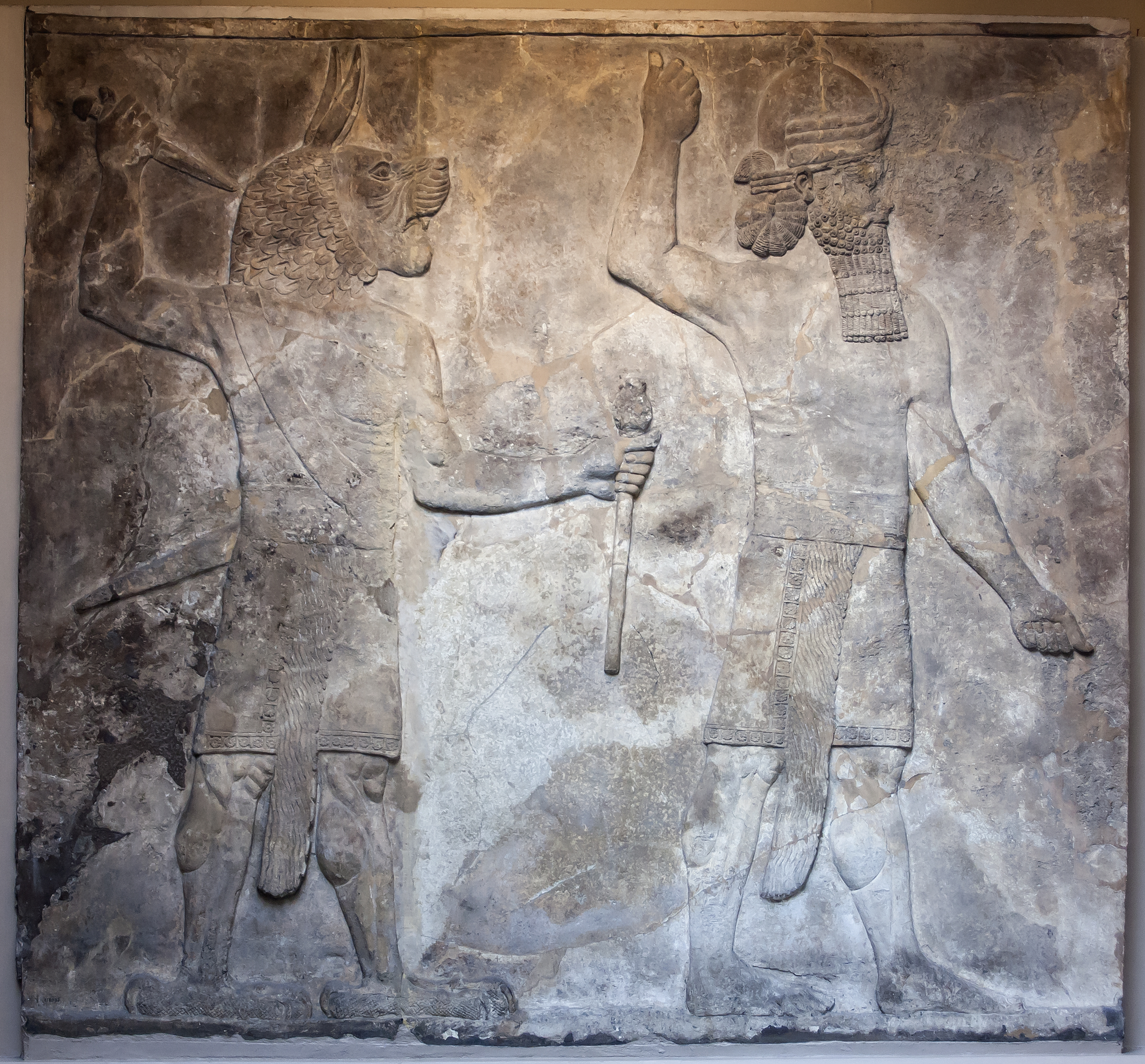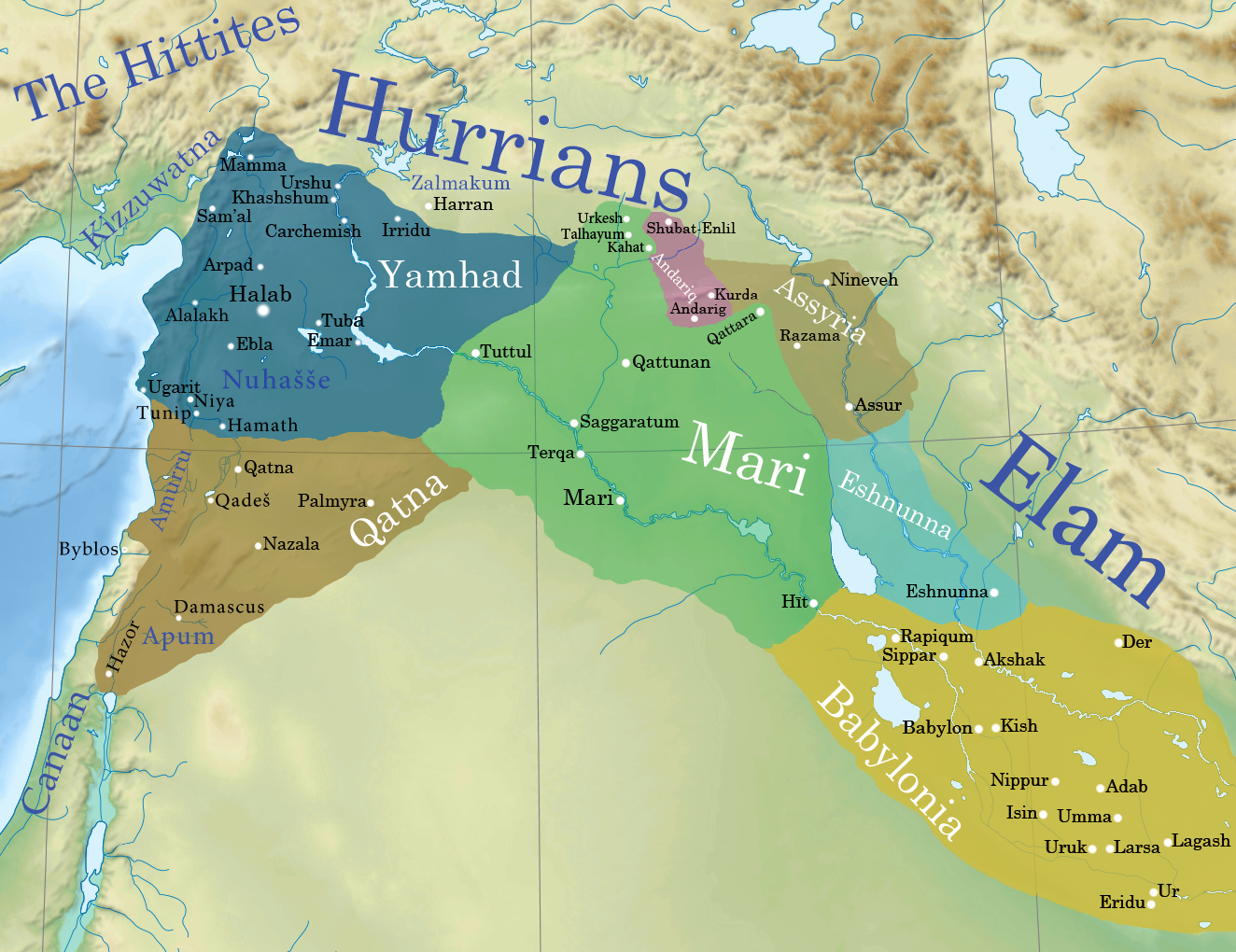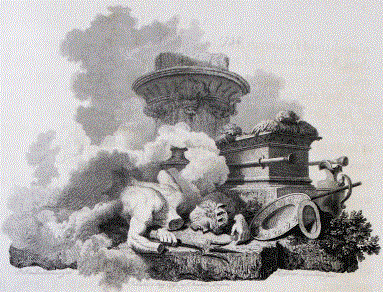|
Ur-dukuga
Ur-dukuga, written d''ur-du''6''-kù-ga'', c. 1830–1828 BC ( MC), was the 13th king of the Dynasty of Isin and reigned for 4 years according to the ''Sumerian King List'',''Sumerian King List'', Ashm. 1923.344 the ''Blund-Wendell'' prism. 3 years according to the ''Ur-Isin kinglist''.''Ur-Isin kinglist'', tablet MS 1686 line 18. He was the third in a sequence of short reigning monarchs whose filiation was unknown and whose power extended over a small region encompassing little more than the city of Isin and its neighbor Nippur. He was probably a contemporary of Warad-Sîn of Larsa and Apil-Sîn of Babylon. Biography He credited Dāgan, a god from the middle Euphrates region who had possibly been introduced by the dynasty’s founder, Išbi-Erra, with his creation, in conesCones LB 990, NBC 6110, 6111, 6112. commemorating the construction of the deity’s temple, the Etuškigara, or the house “well founded residence,” an event also celebrated in a year-name. The inscripti ... [...More Info...] [...Related Items...] OR: [Wikipedia] [Google] [Baidu] |
Suen-magir
Sîn-māgir (, dingir, Dsuen-ma-gir), inscribed dEN.ZU''-ma-gir'', “Sin (mythology), Sîn upholds,” c. 1827–1817 BC (middle chronology, MC) was the 14th king of Isin and he reigned for 11 years.''Sumerian King Lists'' Ash. 1923.444 and CBS 19797 and ''Ur-Isin king list'' MS 1686. Biography His reign falls over the last six years of Warad-Sin and the first five of Rim-Sin I, the sons of Kudur-Mabuk and successive kings of Larsa, and wholly within the reign of the Babylonian monarch Apil-Sin. There are currently six extant royal inscriptions, including brick palace inscriptions,Brick, IM 78635. seals for his devoted servants, such as Iddin-damu, his “chief builder,” and Imgur-Sîn, his administrator, and a coneCone A 16750. which records the construction of a storehouse for the goddess Aktuppītum of Kiritab in his honor commissioned by Nupṭuptum, the ''lukur'' priestess or concubine, “his beloved traveling escort, mother of his first-born.” An inscriptionIB 1610, ... [...More Info...] [...Related Items...] OR: [Wikipedia] [Google] [Baidu] |
Lulal
Lulal, inscribed dlú.làl in cuneiform(𒀭𒇽𒋭), was a Mesopotamian god associated with Inanna, usually as a servant deity or bodyguard but in a single text as a son. His name has Sumerian origin and can be translated as "syrup man." In the second and first millennium BCE, Lulal evolved into an anthropomorphic god/demon used on protective amulets, figurines and exorcists’ paraphernalia used in apotropaic rituals, such as Šurpu and Maqlu, usually displayed alongside Ugallu, “Big Weather Beast”, the lion-headed demon, or with his Akkadian alter-ego Lātarāk. Function as God As a god, Lulal functioned as the Sumerian counterpart of the Akkadian Latarak. His name likely means "syrup man" or "man sweet like syrup." His precise function is not fully understood. It is theorized that he was a god of animal husbandry, evidenced by one epithet of his ''lugal-eden-na'' "King of the Steppe," and his connection with the cult place of Bad-tibira and the god Šakkan, who se ... [...More Info...] [...Related Items...] OR: [Wikipedia] [Google] [Baidu] |
Isin
Isin (, modern Arabic language, Arabic: Ishan al-Bahriyat) is an archaeological site in Al-Qādisiyyah Governorate, Iraq which was the location of the Ancient Near East city of Isin, occupied from the late 4th millennium Uruk period up until at least the late 1st millennium BC Neo-Babylonian period. It lies about southeast of the modern city of Al Diwaniyah. The tutelary deity of Isin, dating back to at least the Early Dynastic Period (Mesopotamia), Early Dynastic period, was the healing goddess Gula (goddess), Gula with a major temple (, E-gal-ma) sited there as well as smaller installations for the related gods of Ninisina and Ninlil, Sud. Archaeology Isin is located approximately south of the ancient city of Nippur. The site covers an area of about 150 hectares with a maximum height of about 10 meters. By 1922 the site had been suggested as that of Isin. Ishan al-Bahriyat was visited by Stephen Herbert Langdon for a day to conduct a sounding, while he was excavating at K ... [...More Info...] [...Related Items...] OR: [Wikipedia] [Google] [Baidu] |
Enlil
Enlil, later known as Elil and Ellil, is an List of Mesopotamian deities, ancient Mesopotamian god associated with wind, air, earth, and storms. He is first attested as the chief deity of the Sumerian pantheon, but he was later worshipped by the Akkadian Empire, Akkadians, Babylonian Empire, Babylonians, Assyrian Empire, Assyrians, and Hurrians. Enlil's primary center of worship was the Ekur temple in the city of Nippur, which was believed to have been built by Enlil himself and was regarded as the "mooring-rope" of heaven and earth. He is also sometimes referred to in Sumerian texts as Nunamnir. According to one Sumerian hymn, Enlil himself was so holy that not even the other gods could look upon him. Enlil rose to prominence during the twenty-fourth century BC with the rise of Nippur. His Cult (religious practice), cult fell into decline after Nippur was sacked by the Elamites in 1230 BC and he was eventually supplanted as the chief god of the Mesopotamian pantheon by the Baby ... [...More Info...] [...Related Items...] OR: [Wikipedia] [Google] [Baidu] |
19th-century BC Sumerian Kings
The 19th century began on 1 January 1801 (represented by the Roman numerals MDCCCI), and ended on 31 December 1900 (MCM). It was the 9th century of the 2nd millennium. It was characterized by vast social upheaval. Slavery was abolished in much of Europe and the Americas. The First Industrial Revolution, though it began in the late 18th century, expanded beyond its British homeland for the first time during the 19th century, particularly remaking the economies and societies of the Low Countries, France, the Rhineland, Northern Italy, and the Northeastern United States. A few decades later, the Second Industrial Revolution led to ever more massive urbanization and much higher levels of productivity, profit, and prosperity, a pattern that continued into the 20th century. The Catholic Church, in response to the growing influence and power of modernism, secularism and materialism, formed the First Vatican Council in the late 19th century to deal with such problems and confirm ce ... [...More Info...] [...Related Items...] OR: [Wikipedia] [Google] [Baidu] |
Amorite Kings
The Amorites () were an ancient Northwest Semitic-speaking Bronze Age people from the Levant. Initially appearing in Sumerian records c. 2500 BC, they expanded and ruled most of the Levant, Mesopotamia and parts of Egypt from the 21st century BC to the late 17th century BC. The Amorites established several prominent city-states in various locations, such as Isin, Kurda, Larsa, Mari, and Ebla, and later founded Babylon and the Old Babylonian Empire. They also founded the Fourteenth Dynasty of Egypt during the fragmented era of the Second Intermediate Period in the Nile Delta, which was characterized by rulers bearing Amorite names such as Yakbim Sekhaenre, and were likely part of the later Hyksos. The term in Akkadian and Sumerian texts refers to the Amorites, their principal deity, and an Amorite kingdom. The Amorites are mentioned in the Hebrew Bible as inhabitants of Canaan both before and after the conquest of the land under Joshua.van Seters, John, "The Terms 'Am ... [...More Info...] [...Related Items...] OR: [Wikipedia] [Google] [Baidu] |
List Of Mesopotamian Dynasties
The history of Mesopotamia extends from the Lower Paleolithic period until the establishment of the Caliphate in the late 7th century AD, after which the region came to be known as History of Iraq, Iraq. This list covers dynasties and monarchs of Mesopotamia up until the fall of the Neo-Babylonian Empire in 539 BC, after which native Mesopotamian monarchs never again ruled the region. The earliest records of writing are known from the Uruk period (or "Protoliterate period") in the 4th millennium BC, with documentation of actual historical events, and the ancient history of the region, being known from the middle of the third millennium BC onwards, alongside cuneiform records written by early kings. This period, known as the Early Dynastic Period (Mesopotamia), Early Dynastic Period, is typically subdivided into three: 2900–2750 BC (ED I), 2750–2600 BC (ED II) and 2600–2350 BC (ED III), and was followed by Akkadian Empire, Akkadian (~2350–2100 BC) and Third Dynasty of Ur, Ne ... [...More Info...] [...Related Items...] OR: [Wikipedia] [Google] [Baidu] |
Chronology Of The Ancient Near East
The chronology of the ancient Near East is a framework of dates for various events, rulers and dynasties. Historical inscriptions and texts customarily record events in terms of a succession of officials or rulers: "in the year X of king Y". Comparing many records pieces together a relative chronology relating dates in cities over a wide area. For the 3rd and 2nd millennia BC, this correlation is less certain but the following periods can be distinguished: *Early Bronze Age: Following the rise of cuneiform writing in the preceding Uruk period and Jemdet Nasr periods came a series of rulers and dynasties whose existence is based mostly on scant contemporary sources (e.g. En-me-barage-si), combined with archaeological cultures, some of which are considered problematic (e.g. Early Dynastic II). The lack of dendrochronology, astronomical correlations, and sparsity of modern, well-stratified sequences of radiocarbon dates from Southern Mesopotamia makes it difficult to assign abs ... [...More Info...] [...Related Items...] OR: [Wikipedia] [Google] [Baidu] |
Gula (goddess)
Gula (Sumerian language, Sumerian: "the great") was a Mesopotamian goddess of medicine, portrayed as a divine physician and midwife. Over the course of the second and first millennia BCE, she became one of the main deities of the Mesopotamian pantheon, and eventually started to be viewed as the second highest ranked goddess after Ishtar. She was associated with dogs, and could be depicted alongside these animals, for example on ''kudurru'' (inscribed boundary stones), and receive figurines representing them as votive offerings. While Gula was initially regarded as unmarried, in the Kassite period she came to be associated with Ninurta. In Babylon his role could also be fulfilled by Mandanu, while the god list ''An = Anum'' links Gula with Pabilsag and Abu. The circle of deities closely associated with her also included Damu and Gunura, who eventually started to be regarded as her children, as well as her sukkal (divine attendant) Urmašum, who might have been imagined as a dog-like ... [...More Info...] [...Related Items...] OR: [Wikipedia] [Google] [Baidu] |
Ninurta
Ninurta (: , possible meaning "Lord [of] Barley"), also known as Ninĝirsu (: , meaning "Lord [of] Girsu"), is an List of Mesopotamian deities, ancient Mesopotamian god associated with farming, healing, hunting, law, scribes, and war who was first worshipped in early Sumer. In the earliest records, he is a god of agriculture and healing, who cures humans of sicknesses and releases them from the power of Demons#Mesopotamia, demons. In later times, as Mesopotamia grew more militarized, he became a warrior deity, though he retained many of his earlier agricultural attributes. He was regarded as the son of the chief god Enlil and his main Cult (religious practice), cult center in Sumer was the Eshumesha temple in Nippur. Ninĝirsu was honored by Gudea, King Gudea of Lagash (ruled 2144–2124 BC), who rebuilt Ninĝirsu's temple in Lagash. Later, Ninurta became beloved by the Assyrians as a formidable warrior. The Assyrian king Ashurnasirpal II (ruled 883–859 BC) built a massive tem ... [...More Info...] [...Related Items...] OR: [Wikipedia] [Google] [Baidu] |
Dagon
Dagon or Dagan (; ) was a god worshipped in ancient Syria, across the middle of the Euphrates, with primary temples located in Tuttul and Terqa, though many attestations of his cult come from cities such as Mari and Emar as well. In settlements situated in the upper Euphrates area, he was regarded as the "father of gods" similar to Mesopotamian Enlil or Hurrian Kumarbi, as well as a lord of the land, a god of prosperity, and a source of royal legitimacy. A large number of theophoric names, both masculine and feminine, attests that he was a popular deity. He was also worshiped further east, in Mesopotamia, where many rulers regarded him as the god capable of granting them kingship over the western areas. Attestations of Dagan from coastal areas are much less frequent and come mostly from the northern city of Ugarit, where Dagan's cult had a limited scope. According to the Hebrew Bible, Dagan was also the national god of the Philistines, with temples at Ashdod and Gaza, but ... [...More Info...] [...Related Items...] OR: [Wikipedia] [Google] [Baidu] |
Ishbi-Erra
Ishbi-Erra ( Akkadian: d''iš-bi-ir₃-ra'') was the founder of the dynasty of Isin, reigning from c. 2017— 1986 BC ( MC). Ishbi-Erra was preceded by Ibbi-Sin of the third dynasty of Ur in ancient Lower Mesopotamia, and then succeeded by Šu-ilišu. According to the Weld-Blundell Prism,WB 444, the Weld-Blundell prism, r. 33. Išbi-erra reigned for 33 years and this is corroborated by the number of his extant year-names. While in many ways this dynasty emulated that of the preceding one, its language was Akkadian as the Sumerian language had become moribund in the latter stages of the third dynasty of Ur. Biography At the outset of his career, Ishbi-Erra was an official working for Sumerian King Ibbi-Sin, the last king of the third dynasty of Ur. Ishbi-Erra was described as a man of Mari,Tablet UM 7772. either his origin or the city for which he was assigned. His progress is recorded in letters to the king and to the governor of Kazallu (Puzur-Numushda, later renamed Pu ... [...More Info...] [...Related Items...] OR: [Wikipedia] [Google] [Baidu] |








